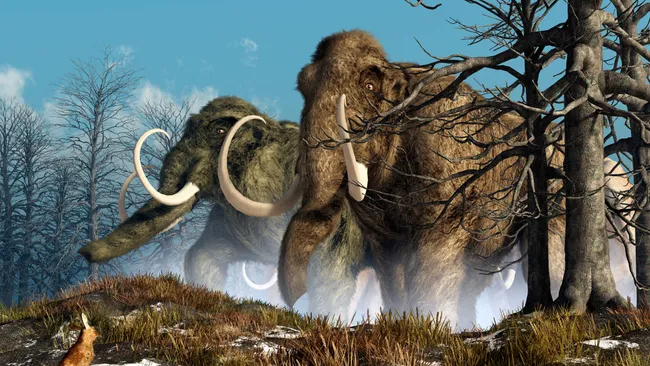A boom in vegetation at the end of the last ice age may have created so much pollen, it blocked mammoths’ sense of smell. A new study suggests this drove the beasts to extinction, but not everyone agrees.
Could Pollen Allergies Have Led to Mammoth Extinction?
A new study suggests that pollen clouds, carried on the winds of a warming world at the end of the last ice age, may have played a surprising role in the extinction of woolly mammoths. Researchers propose that an explosion in vegetation, triggered by global warming, released vast amounts of pollen, leading to allergic reactions in the ancient animals. This hay fever-like response could have disrupted their ability to communicate, find food, and even mate, ultimately contributing to their extinction.
A Sneezing Predicament: Pollen’s Impact on Mammoths
According to the study published in Earth History and Biodiversity (Aug. 27), researchers believe that the massive increase in pollen due to climate-driven plant growth may have blocked mammoths’ sense of smell. This would have impaired their ability to sniff out mates during the breeding season, preventing reproduction and leading to a significant population decline.
The researchers argue, “One of the possible mechanisms for the extinction of animals during climate change could be a violation of the sense of smell due to the development of allergies when the flora changes.” By disrupting mammoths’ ability to communicate, navigate, and breed, pollen allergies could have played a more significant role in their demise than previously thought.
Woolly Mammoths and Their Final Days
Woolly mammoths (Mammuthus primigenius) roamed the earth during the Pleistocene epoch, with the last populations disappearing roughly 10,000 years ago. However, small isolated groups managed to survive until around 4,000 years ago on Wrangel Island, a remote location off the northeastern coast of Russia. While scientists agree that a combination of inbreeding, human hunting, and changes in vegetation led to their extinction, the precise contribution of each factor remains a subject of ongoing debate.
Testing the Allergy Hypothesis
The researchers suggest that examining mammoth stomach contents for pollen or plant materials that could trigger allergies might provide evidence to support their theory. Some mammoth carcasses, preserved in frozen tundra, contain embedded pollen and plant matter in their mummified tissues, potentially offering clues about allergens.
To further investigate, the study’s authors propose searching for immune system proteins, such as immunoglobulin E (IgE), in fossilized mammoth feces (coprolites). IgE is a key protein produced during allergic responses and could indicate whether mammoths suffered from hay fever-like symptoms. So far, no studies have specifically looked for IgE in ancient mammal samples, making this an unexplored avenue of research.
Skepticism from Experts
Not all scientists are convinced by the new theory. Vincent Lynch, an evolutionary biologist from the University at Buffalo, expressed doubts about the role of allergies in mammoth extinction. “This idea seems pretty far out there, and I’m not sure how you would ever prove it,” Lynch said. He pointed out that while ancient DNA from Wrangel Island mammoths shows mutations affecting their ability to detect floral scents, this doesn’t necessarily support the idea that allergies were a major factor in their extinction.
Lynch remains convinced that environmental changes and human activities were the primary causes behind the woolly mammoth’s extinction, although he acknowledges that further research could provide more insight into the allergy hypothesis.
The Debate Continues
While the idea of pollen allergies causing mammoth extinction may seem speculative, it opens the door to new questions about how climate change and environmental factors affect species. As researchers continue to study the remnants of these iconic creatures, they may yet uncover surprising details about what ultimately led to the woolly mammoth’s downfall.
